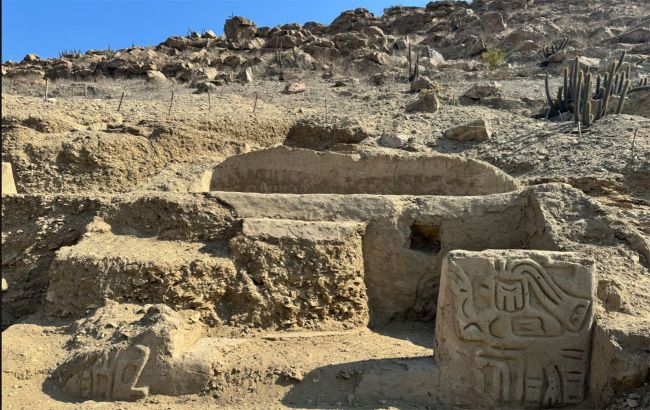Older than Machu Picchu: Temple over 4,000 years old discovered in Peru
 In Peru, a building older than Machu Picchu was discovered (Photo: Ucupe Cultural Landscape Archaeological Project).
In Peru, a building older than Machu Picchu was discovered (Photo: Ucupe Cultural Landscape Archaeological Project).
Archaeologists in Peru have discovered the ruins of an ancient religious complex that is 3,500 years older than the famous Incan citadel of Machu Picchu. It has also become known that there were other settlements in Peru before the Incas, according to Sci.News.
According to the research team from the Ucupe Cultural Landscape Archaeological Project, the recently discovered temple and theater are approximately three and a half thousand years older than Machu Picchu. The found structures were built long before the Incas and their predecessors appeared.
"It was amazing. This discovery tells us about the early origins of religion in Peru. We still know very little about how and under which circumstances complex belief systems emerged in the Andes, and now we have evidence about some of the earliest religious spaces that people were creating in this part of the world," said Dr. Muro Ynoñán, project leader and an archaeologist at the Field Museum.
He noted that it is currently unknown what these people called themselves or how others referred to them.
Dr. Ynoñán and his team first discovered the new archaeological site at La Otra Banda in Peru in 2023. They began investigating a site approximately 10 by 10 meters, slowly removing sediment that had accumulated over millennia. At a depth of 1.8 meters, they found traces of ancient walls made of clay.
"It was so surprising that these very ancient structures were so close to the modern surface," noted the project leader.
The archaeologists began digging deeper and found evidence that there was once a temple at this site.
"We think that a large temple was built into the side of the mountain, and we’ve found one section of it. One of the most exciting things we found was a small theater, with a backstage area and a staircase that led to a stage-like platform. This could have been used for ritual performances in front of a selected audience," added the doctor.
Near the theater stairs, archaeologists found clay panels decorated with intricately carved patterns depicting a bird-like creature.
"It’s a very beautiful and, at the same time, intriguing design, of a mythological creature — it’s like an anthropomorphic bird, but with some reptilian features. This figure stood out to us because it gives important clues as to when the temple was built and how this construction relates to other ancient temples built by early groups from the Andes," said Inonian.
According to scientists, other images of mythological creatures similar to those found first in Peru are dated to what archaeologists call the Initial Period, about 4,000 years ago.
"Despite the name, the people of the Initial Period were not the first to live in the region: people have inhabited Peru for 15,000 years. Around 5000-3000 BCE, called the Preceramic Period, people in coastal Peru began creating societies and complex political systems. The Initial Period came next, starting around 2,000 BCE and lasting until 900 BCE. The Initial Period is important because it’s when we first start to see evidence of an institutionalized religion in Peru," explained the archaeologists.

